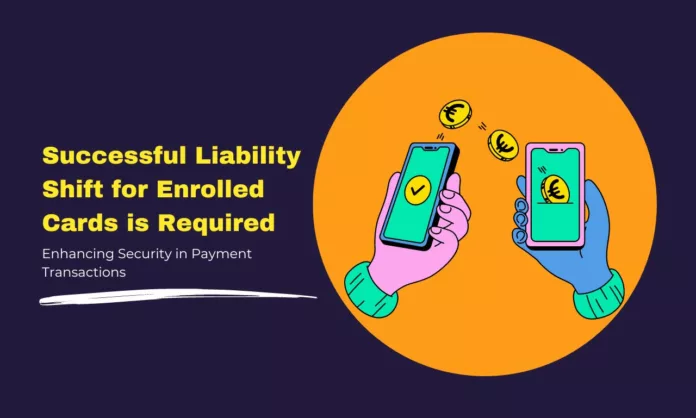In today’s digital age, where financial transactions have largely shifted to online platforms, the need for secure payment methods is paramount. One such security measure that has gained significant importance is the liability shift for enrolled cards. This process ensures that both consumers and merchants are protected from fraudulent activities, while promoting a safer and more reliable payment ecosystem. In this article, we will delve into the importance of a successful liability shift for enrolled cards and explore its benefits for all stakeholders involved.
Table of Contents
Understanding Liability Shift
Liability shift refers to the transfer of financial responsibility from the issuer of a payment card (such as a bank) to the merchant or payment processor in case of fraudulent transactions. The liability shift occurs when specific conditions are met, primarily through the implementation of advanced security features like EMV chip technology or tokenization. These features ensure that the card being used for the transaction is genuine and that the payment data is encrypted, significantly reducing the risk of fraud.
The Role of Enrolled Cards
Enrolled cards are those that have undergone an authentication process to verify their legitimacy and ensure their eligibility for a liability shift. This process typically involves a cardholder registering their card with their bank or payment provider and providing additional information or credentials for verification. Enrolled cards are equipped with enhanced security measures, making them less susceptible to unauthorized use or data breaches.
Benefits for Consumers
- Reduced Liability: When a liability shift is successfully implemented, consumers enjoy enhanced protection against fraudulent transactions. In cases of unauthorized use or compromised data, the responsibility for financial losses falls on the merchant or payment processor rather than the cardholder. This provides consumers with peace of mind, knowing that their hard-earned money is safeguarded.
- Enhanced Security: Enrolled cards often incorporate advanced security features, such as tokenization or biometric authentication, making them more secure than traditional magnetic stripe cards. These measures help protect sensitive payment data, reducing the risk of identity theft and unauthorized transactions.
Benefits for Merchants
- Fraud Prevention: Liability shift encourages merchants to adopt secure payment technologies, such as EMV chip readers. By implementing these technologies and accepting enrolled cards, merchants significantly reduce the risk of accepting counterfeit or stolen cards, protecting their business from potential losses.
- Customer Confidence: Customers are more likely to trust merchants who prioritize security and protect their financial interests. By accepting enrolled cards, merchants can build trust and loyalty among their customer base, ultimately driving repeat business and positive word-of-mouth referrals.
- Cost Savings: In the absence of a successful liability shift, merchants are often burdened with the financial repercussions of fraudulent transactions. By successfully implementing a liability shift for enrolled cards, merchants can reduce the financial strain associated with chargebacks and potential legal disputes, ultimately improving their bottom line.
Conclusion
In the rapidly evolving landscape of digital payments, a successful liability shift for enrolled cards is crucial for fostering a secure and trustworthy payment ecosystem. By ensuring that both consumers and merchants are protected from fraudulent activities, this mechanism promotes confidence in online transactions and encourages the adoption of advanced security measures. As consumers, it is important to prioritize the use of enrolled cards, while merchants should strive to accept them, reinforcing their commitment to security and customer satisfaction. Together, these efforts will contribute to a safer and more reliable digital payment environment for everyone involved.

